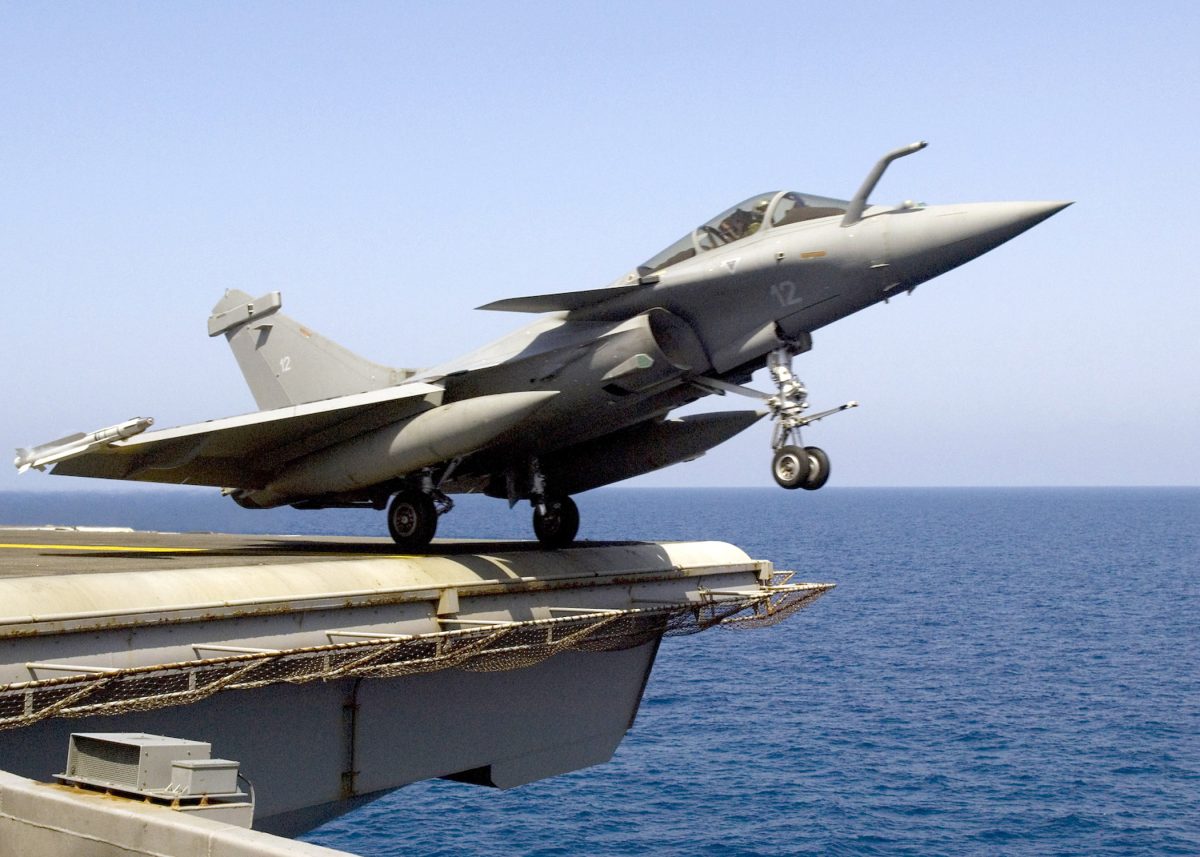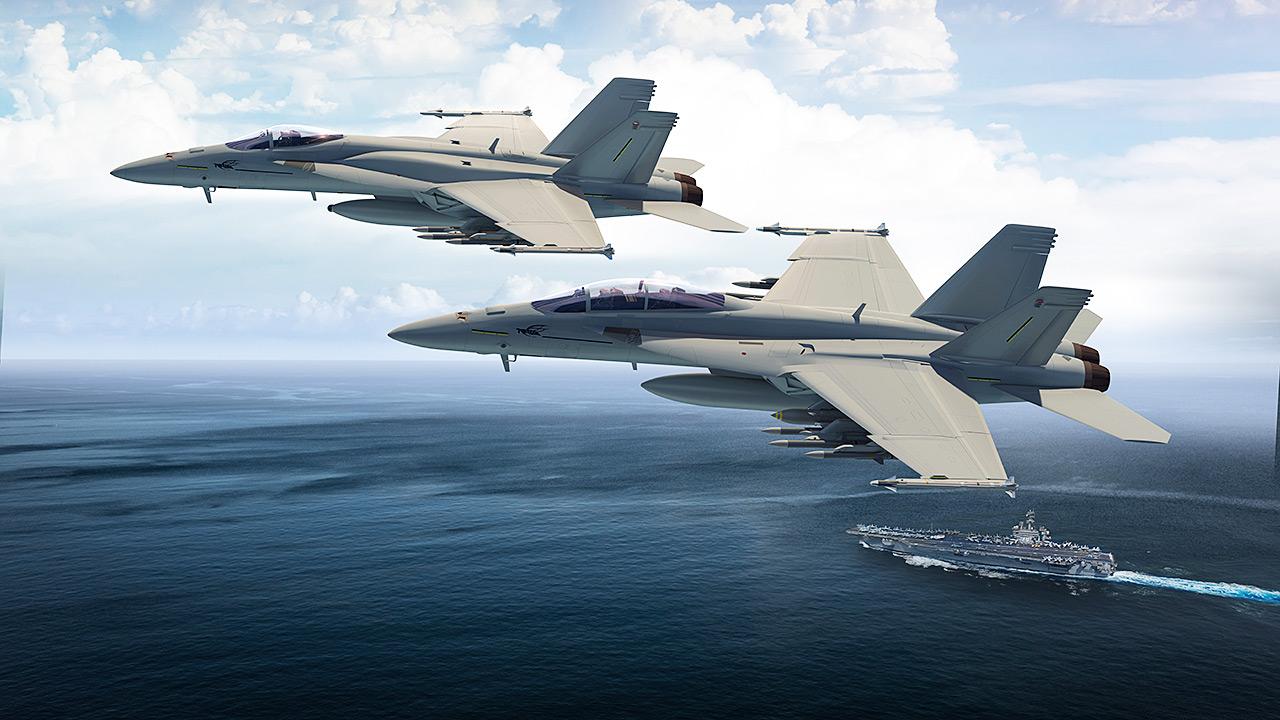By Vice Admiral Shekhar Sinha (Retired)
Rafale-M (Marine) vs F-18-Super Hornet: With the induction of INS Vikrant, the Indian Navy is looking to the future. With MiG-29Ks facing some issues, the Indian Navy is evaluating French Dassault Rafale-M fighters against Boeing’s F-18 Super Hornets.
From the time the first indigenous aircraft carrier sailed out of Cochin Shipyard, it has been in the news. India has become one of the few countries in the world which has the ability to build a complex ship like an aircraft carrier.
It is not only the hull and propulsion but there are hundreds of components and equipment which go into the build. As they say, an aircraft carrier is a “ship” alright but it is a “town-ship”.
It is so-called because the crew lives on board and therefore home for them. A ship must be a good home to the crew for them to give their best to the country. It is in this context that many ancillary industries have to take up the challenge of manufacturing components that are required to make the ship a reasonably comfortable home and a good fighting platform.
Vikrant is now going through the paces of trials. These are long drawn and take quite some time. Each component and sub-component of the ship are operated at their maximum designed limit and thus boundaries of their performance are established.
The Shipyard Project team accompanies the Naval crew. Performance is jointly observed and made note of. On return to harbor, the shipyard attends to the unsatisfactory observations and re-offers the ship for trials to prove that the shortcomings observed during the previous trials have been liquidated.
The present outing of Vikrant is likely to concentrate on the operational aspects such as turning diameters at various angles of the rudder as also the diameters at various speeds.

Vital Tests
These have operational implications. The ship is also tested for stopping distances at various settings of power/speed (engines). The ship’s operations team must know how much distance will the ship travel due to its momentum after engines have been stopped. And this must be tested at various power settings.
The performance data has to be recorded in the ship’s data book as the benchmark at the time of the first trials. In the future, whenever the ship undergoes refit, the operational data obtained during post refit trials are compared with the original data.
Any variations are recorded for subsequent reference. Ultimately, the ship is commissioned only after all designed parameters have been met.
How about the main combat asset of the aircraft carrier- the aircraft itself? Every type of aircraft and helicopter undergoes carrier compatibility trials to establish its envelope within which they can operate from the carrier. While rotary-wing aircraft can establish their operational boundaries soon, the fixed-wing fighters take much longer.
Now, in the case of Vikrant, the existing inventory of MiG 29 K will be tested first. Since the carrier has been designed as a ski-jump launch ship, the aircraft must be capable of launching (take off) safely with its weapon and fuel load for a typical mission.

The MiG 29 Ks are already proven to operate from ski jump on board the Vikramaditya and therefore, the test pilots and engineers will be in a familiar environment onboard Vikrant which has a similar design. However, for an aircraft to launch (take off) from a carrier, it has to recover (land) first.
For recovery, the ship is fitted with arrester wires which are picked up by the hook fitted under the tail section of the landing aircraft. Once the aircraft hook picks a wire (trap), the pilot shuts the power and allows the arrester wire to get pulled out against hydraulic pressure jacks fitted with the wire.
DECODED: Why China’s Route To ‘Super Power’ Status Is Highly Dependent On Maritime Supremacy & PLA Navy
The energy of the aircraft at the time of trap is required to be brought to zero to prevent it from falling overboard. In this process of arrester wire pull out the aircraft traverses some distance forward. Adequate deck length must be available for wire pull-out on recovery. Wire pull-out varies with different types of aircraft subject to their landing speed and weight.
The degree of difficulty during trials of MiG 29 K should be less since the design of Vikrant would have factored the existing aircraft inventory ( MiG 29 K) and possibly LCA Navy.
Eyes On The Future – Rafale-M Or Super Hornets
With the induction of Vikrant, the Navy is looking to the future. MiG 29 Ks have faced some difficulties during their operational service. There have been issues with airframes and other structures leading to less than desirable availability.
A report to this effect was put up by CAG to the parliament. Since the aircraft carriers have long service life (in the range of 30-40 years), the Navy must look beyond MiG 29 K option at this stage. There is also a proposal for building IAC II which will need fighter aircraft.

The decision on the type of aircraft for the carriers would be driven by the maritime security scenario in the Indo- Pacific, particularly in the IOR, in the coming decade.
There is no doubt that IOR is becoming more and more militarized while India is on the path of significant economic growth. This requires our trade and commerce to flow over oceans without any hindrance whereas in the last decade traditional and non-traditional threats have multiplied many folds.
It is expected to get worse not only by increased commercial traffic of non-IOR nations in our backyard but also their Navies. Some countries have significantly higher influence than us on our maritime neighbors who could facilitate the movement and berthing of ships and submarines of the countries adversarial to India. This adds to our security concerns.
Our 90% of our trade, by volume, traverses over oceans and it could become vulnerable to interdiction during the strained relationship with adversarial countries. The technological advancements made by our adversaries also need to be factored in for any future acquisition of our weapon platforms.
It is in this era of geopolitical turmoil that the Navy is examining its options. Navy had advertised RFI (Request for Information) for 56 Deck Based Fighter aircraft for Vikrant and IAC II, which has now been scaled down due to budgetary constraints.
Navy is in the process of evaluating two types of deck-based aircraft, Rafale M from France and F-18 Super Hornets from the US (Boeing stable) for its newly built aircraft carrier Vikrant. Presently Rafale M is under evaluation trials at Goa which has Shore Based Test Facility.

SBTF has a ski jump and arrester wire recovery system with appropriate instrumentation. Very few countries in the world have such a facility. It was built for trails of LCA Navy since it was the first time ever that an Indian-built deck-based fighter needed evaluation testing for its maiden landing on a flight deck.
Navigating through methodical processes lead to LCA Navy’s first recovery (landing) onboard Vikramaditya by a Naval Test Pilot Commodore Jaideep Maolankar. Now, the Rafale has to undergo those set of trials prior to proving its airworthiness from the Vikrant.
It will be a long drawn process. It is necessary to mention that Rafale was designed for operations from the French aircraft carrier Charles d’ Gaul which participated in GWOT in Afghanistan in 2001-2. The writer had an opportunity to be on board the ship during her deployment (as the Fleet Operations Officer of the Western Fleet).
The French Air Force acquired the land-based Rafale 6-7 years down the line in 2007.
Similar trials will be carried out by F -18 Super Hornets in the month of March. The F 18 too is a catapult launch aircraft, just as the Rafale, therefore, the ski jump trial will be new for them both.
Both manufacturers would have done simulations in their own facilities before offering the aircraft for these trials at Goa. Optimistically it can be assumed that both aircraft would qualify the proving trials. As far as Rafale is concerned it was first built around the year 2000 and encompasses newer technologies compared to both F 18 and MiG 29k.
Battle-Ready
These shore-based trials should lead to proving trials onboard the Vikrant when the ship becomes operational. In all probability, the MiG 29K would be first to do its carrier compatibility trials in order to get the ship operational with the existing inventory of MiGs first (one in hand is better than two in the bush is a famous saying).
Another important aspect of the trials would be the handling of these aircraft on the deck of Vikrant. How quickly and how many aircraft can be parked on the deck and how many in the hangar, the ability of these aircraft to fit into the deck edge lift for movement to and from hangar to the flight deck.
There have been reports of some issues with the wingspan of aircraft and its ability to fit onto the lift, particularly the Super Hornet. One assumes that these issues would have been addressed by the manufacturer. If selected Rafale would offer ease of maintenance considering that the Indian Air Force is operating a land-based version of the same aircraft, there would be a commonality of many equipment and components, better logistics, and engineering support.
The Indian Navy is at the cusp of transformation in all dimensions of maritime warfare. State of the art indigenous ships, Scorpene and soon to follow Project 75 I, Arihant class SSBNs, the likelihood of SSNs, cyber warfare & space warfare assets are being inducted.
And now Futuristic Fighter aircraft, additional P8i & Sikorsky ASW helicopters would be shaping the Indian Navy’s ability to deter the adversaries and give confidence to IOR neighbors for an environment of peace and stability for prosperity.
- (Vice Admiral Shekhar Sinha (retd) is the former Chief of Integrated Defence Staff & Commander in Chief, Western Naval Command.)
- Mail us at – ETdesk@eurasiantimes.com




